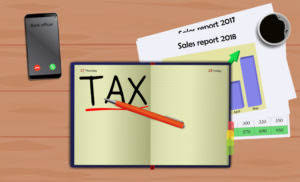
Depending on the specifics of your business, you may need to customize this bookkeeping template to suit your business needs. This template serves as a starting point for setting up a bookkeeping system in Excel. Balance sheet accounts, on the other hand, are permanent accounts. At the end of the month, calculate the ending balance for each account. Use the ending balances in the general ledger to create the trial balance. Key functions include SUM, IF, VLOOKUP, and Pivot Tables, all of which help perform essential accounting tasks efficiently.
Tracking Expenses and Managing Cash Flow
In this lesson, we learn how to use Excel formulas to calculate your tax liability. Learn how to create an amortization table to show the interest and balances for each period. We learn how to get data into Excel in a much more effective manner than copy and paste. We learn about prepping data for a table, converting the data to a table, and the benefits of a table. In this lesson, we learn the basic uses of IF and IFS and how to combine it with AND()/OR(). We examine a timesheet and a payroll calculation to illustrate time as part number, how to format time, and how to calculate gross pay based on time and an hourly rate.
Popular Excel Templates for Accounting
Make sure to keep the income sheets separated, organized by month. Bench simplifies your small business accounting by combining intuitive software that automates the busywork with real, professional human support. While using Microsoft Excel for accounting bookkeeping services might seem daunting at first, the effort pays off with a customized system that caters to your specific needs.
Creating and Managing Journal Entries in Excel
It will enable you to keep tabs on all accounts related to your business. If you don’t have accounting knowledge, you’ll have a hard time using this template, so Certified Bookkeeper ask someone with accounting experience to use this sheet for tracking your accounts. Each journal entry has an equal amount of debit and credit dollar amounts. At first, it seems more straightforward, but you’ll still need to understand the Excel accounting process and how to complete each task. You’ll need to set up accounts, post transactions, and create your income statement using Excel. These very basic accounting principles and Excel apps are all you need to be familiar with to start to use Excel for Accounting and Bookkeeping in your small business.

Bookkeeping in Excel is a systematic method for tracking and organising a company’s financial data using the Microsoft Excel application. Owing to Excel’s wide distribution and user-friendly functionality, this style of Financial Management is most often used by small businesses and individual entrepreneurs. Excel is a staple in the accounting world, providing tools that cater to both simple and complex financial tasks.

- An income statement sheet contains information on your expenses and earnings and displays your net income.
- The screenshot above manifests the records of a Company that are to be transformed into a P&L Account.
- When a sale is made you would need to debit accounts receivable (asset) and credit one of your revenue accounts.
- The chart of accounts lists every account number and the account’s description.
- Data Tables help you with formulas that use one or two variables.
- Apply consistent accounting number formatting to maintain uniformity and accuracy across all your accounting spreadsheets.
If you need a real-time spending tracker, select normal balance from the expense reports available. Then, scan receipts and other source documents and attach them to journal entries. You can also automate recording transactions by downloading your bank statements and credit card activity into your accounting records. The most useful financial statements are income statements and balance sheets.

It is based on the principle that every transaction will have two entries—a debit and a credit entry. Excel can be a valuable tool for businesses that are still in their initial growth phases. It helps you record volumes of data, tabulate and compare financial data, and create graphs to visually represent the same.
On your balance sheet, you’d add the $10,000 increase in liabilities to the $0 change in equity to get a $10,000 assets increase. Liability and revenue accounts increase with a credit entry, with some exceptions. Pivot tables help you analyze large datasets by summarizing information.
While there are various accounting software solutions available for your organization’s accounting system needs, Microsoft Excel remains a popular choice. The benefit of the general ledger is that you can review every journal entry that impacted a particular account. Unfortunately, creating a general ledger with general journal entries using Excel is time-consuming. And a large number of data entries may increase the risk of error. Once you build a chart of accounts in an accounting spreadsheet, create a separate Excel document to post journal entries. Once you create or download templates, you can use them as a basis for more advanced account-related tasks like basic financial statements, forms, receipts, reports, etc.

